Ford SUV cover the long and short of it
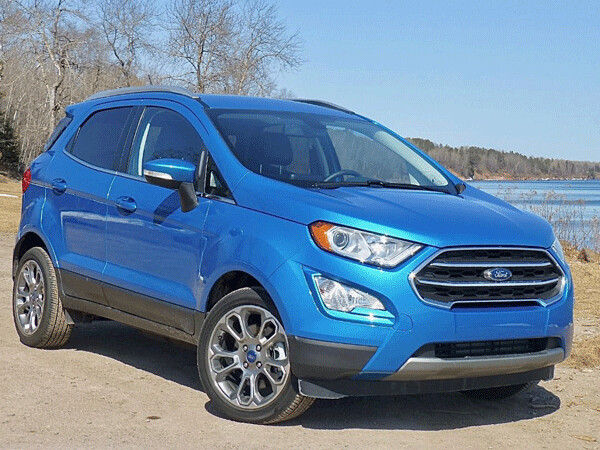

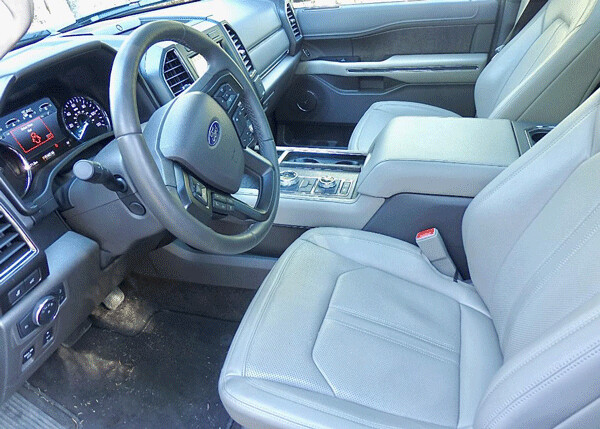

Here is an interesting irony I’ve stumbled across - or maybe run over - while alternately complaining and evaluating the runaway passion U.S. consumers have for SUVs: In the ongoing race to fit an SUV into every available niche in the marketplace, we haves reached the point where all of them have positive reasons for their existence.
Consider Ford. While reaching out all over the world, Ford has a pretty impressive stable of SUVs, starting with the compact Escape, then moving up to the Edge, then the Explorer, and finally the Expedition. Nice group, there. But wait, we have to plug in the Flex, which is that boxy but eminently useful midsize wagon/SUV compromise.
But the surprising and often-overlooked new entry in the Ford array is the EcoSport, a stubby little vehicle I drove briefly and saw at the Detroit and Chicago Auto Shows. Because I am most attracted to reduced-size vehicles that do the work of their larger brethren, I was happy to get an EcoSport for a week’s analysis, right after I had driven an Expedition for a week. With late-spring winter storms coming and going, it gave me an interesting perspective on how both might handle nasty weather, too. The EcoSport might be the biggest surprise of the whole batch, but hitting the high spot and the low spot of them all is required.
The Expedition, of course, is Ford’s biggest SUV. While it nearly vanished in the recent downturn in large SUVs, the Expedition and its sister-ship, the Lincoln Navigator, are both back and all-new for 2018. The Navigator, in fact, won Truck of the Year, beating out the Expedition on the basis of grandiose features, even though they push the price of the Nav well above the Expedition.
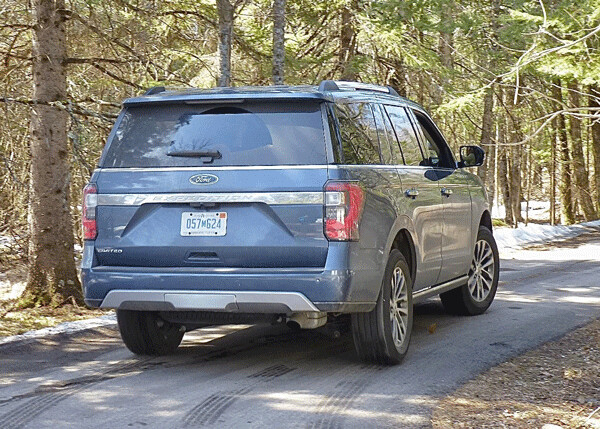
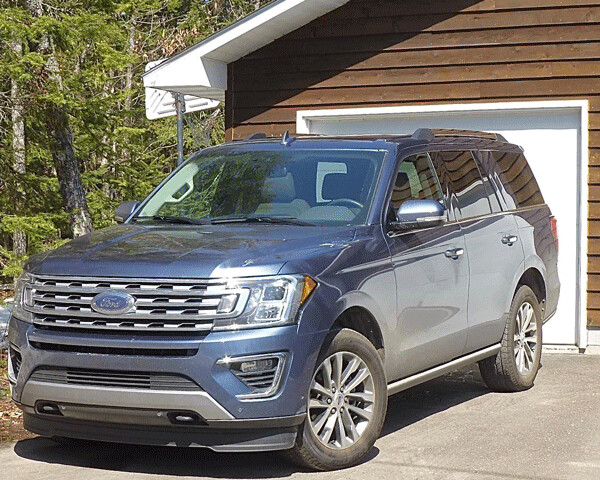
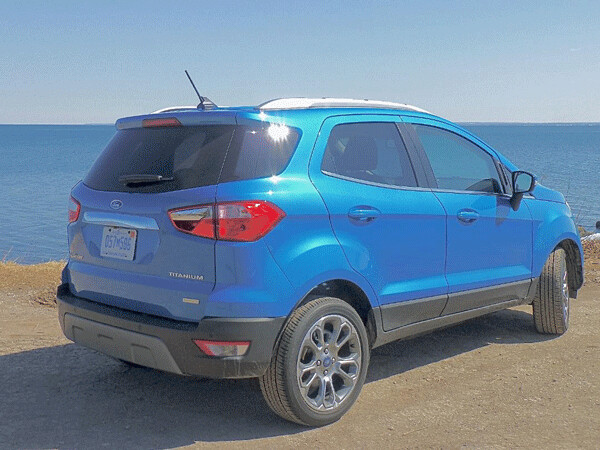

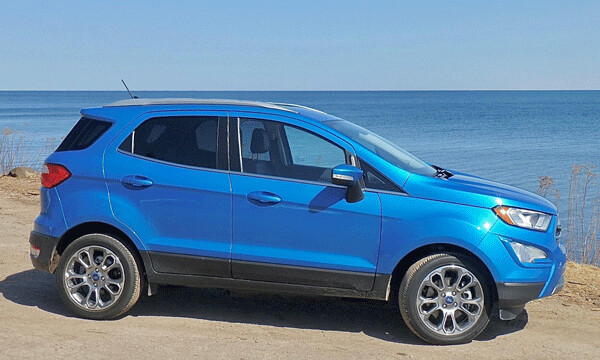
I am yielding my well-gained opinions on why such huge SUVs are too large for their own good, because U.S. buyers keep lining up to buy such monster trucks as Suburbans, Tahoes, Yukon Denalis, Navigators, Toyota Sequoias, Nissan Armadas, Lexus GXs, Infiniti QX80s, Toyota Land Cruisers, and, yes, Ford Expeditions.
If you tow an RV trailer or horse trailer, or have otherwise realistic needs to two large objects, and you can afford a large SUV, the crop of them now on the marketplace form, an impressive group.
The Expedition got Ford’s major makeover for 2018, switching to add power and lose weight at the same time. Going to a lot of aluminum in the body, similar to the latest F-150 pickup, relieved a lot of weight without compromising the solild structure over the steel frame.
For power, the Expedition offers only one engine, the 3.5-liter EcoBoost V6, which comes with 375-400 horsepower and 470-480 foot-pounds of torque, blown through twin-turbochargers. With a 10-speed automatic, that powertrain sends the Expedition sailing off in a quick and sprightly manner, and it handles well in curves and corners, while riding smoothly in all circumstances. It may also leave you with barely 20-mpg or maybe just under 20, which is OK with all that available power, but could be a shortcoming against some competitors.
You can get an off-road package on top of that, although it’s hard to visualize many cognizant folks taking such a large land-yacht off-road. Of more use is the towing capacity, which registers 9,300 pounds.
The Expedition Limited 4x4 has a starting price of $65,705, and with tone leather seats contrasting with the steely-blue exterior, and a few options, the sticker shows $70,155. For that you get the full suite of safety stuff, such as blind-spot detection, reverse sensors, auto start-stop, trailer-sway control, and all the various warning devices.
Of more use every day, there are some very neat features. A two-level glove box arrangement, various nooks and cubicles, a panoramic vista roof, voice-activated touchscreen navigation, and power control for all three rows of seats. For the front, that handles lumbar support, etc., in the second row, a power switch helps you tilt the backrest forward and tumble the buckets for easy entry into the third row. But the treat comes when you want to stash stuff in the way-back. Open the hatch and you see a large storage area behind the third row. On the left side of the body, there are a couple rows of buttons. The left panel causes the third-row seatbacks to fold, or the whole seat to disappear. The right side does the same for the second row, so without moving from the open hatch, you can power down the second and third rows and create an enormous storage space for all your worldlies.
For the size of the Expedition, automatic running boards and handgrips are welcome additions. Its surprising agility is impressive, but its need for more room than you anticipate in order to park is something you need to learn immediately.
There are no parking issues, on the other hand, with the EcoSport. I think the name is unfortunate, because Ford has its EcoBoost name for turbocharged engines, and Chevrolet tags every engine it turns out as EcoTech, so the “Eco” prefix has become almost generic. And this little beast deserves some credit for breaking new trails.
Aerodynamically rounded, the EcoSport is blunt in front and compact from every angle. Four can fit inside comfortably, and while all-wheel-drive is a great asset, the test vehicle was only front-wheel-drive, but it showed no reluctance to track straight even in ferocious cross-winds coming off Lake Superior and hitting 54 mph in velocity.
The reason for accepting the FWD plan is that the EcoSport comes with two engines. With the 2.0-liter normally-aspirated 4, you can get all-wheel drive. With the FWD, you get an amazing little 10-liter 3-cylinder EcoBoost engine - yes, three turbocharged cylinders. It turns out 123 horsepower, which isn’t a lot, but 148 foot-pounds of torque, which is actually a shade above the 146 foot-pounds of the larger 4.
Besides, while driving it through all manner of city congestion, snowy hills, and freeway stretches, I was able to record 32 miles per gallon in most driving, and a “low” of about 29.5 in city only.
Of course, you aren’t going to be towing anything with the EcoSport, but its quick-handling and lively acceleration, it qualifies as an SUV but it really is the ideal compromise between a small SUV and an economy hatchback.
With the 1.0 turbo and 6-speed automatic, the EcoSport lists for $25,740 in Titanium trim as top of the line, but the test vehicle had the 1.0’s incentive package that reduced its sticker to $24,380 even fully-equipped.
Its stop-start, blind spot information, hill-start assist, autostart, rear-view alerts and power moonroof work just as well as they do on the Expedition, and just as I was going to write that it was half the price, I looked again and realized the EcoSport is closer to one-third the price of the Expedition.
After driving both vehicles, you come away impressed with all the nice features housed in the Expedition, but more amazed at all Ford could stuff into the comparatively tiny EcoSport
